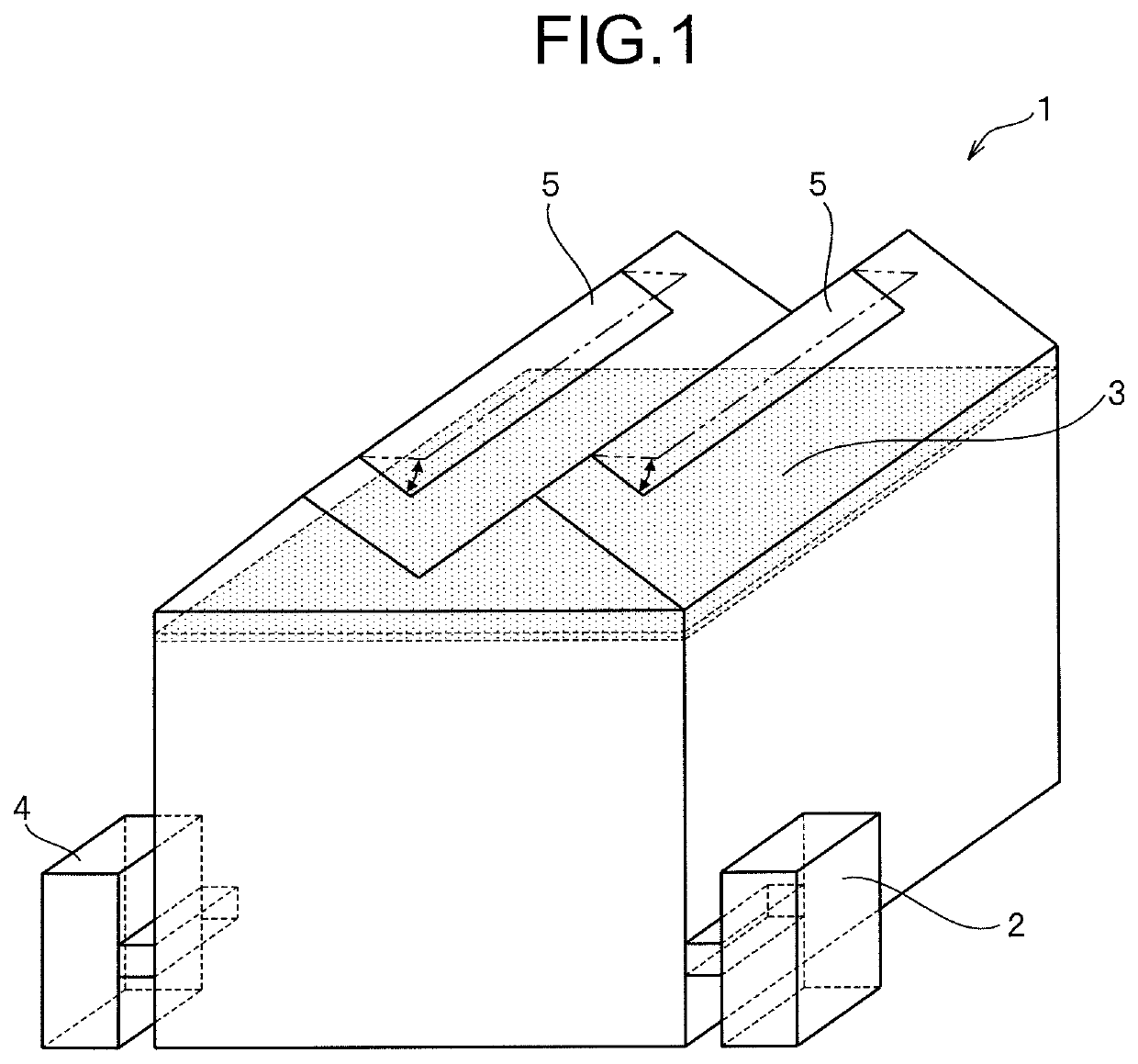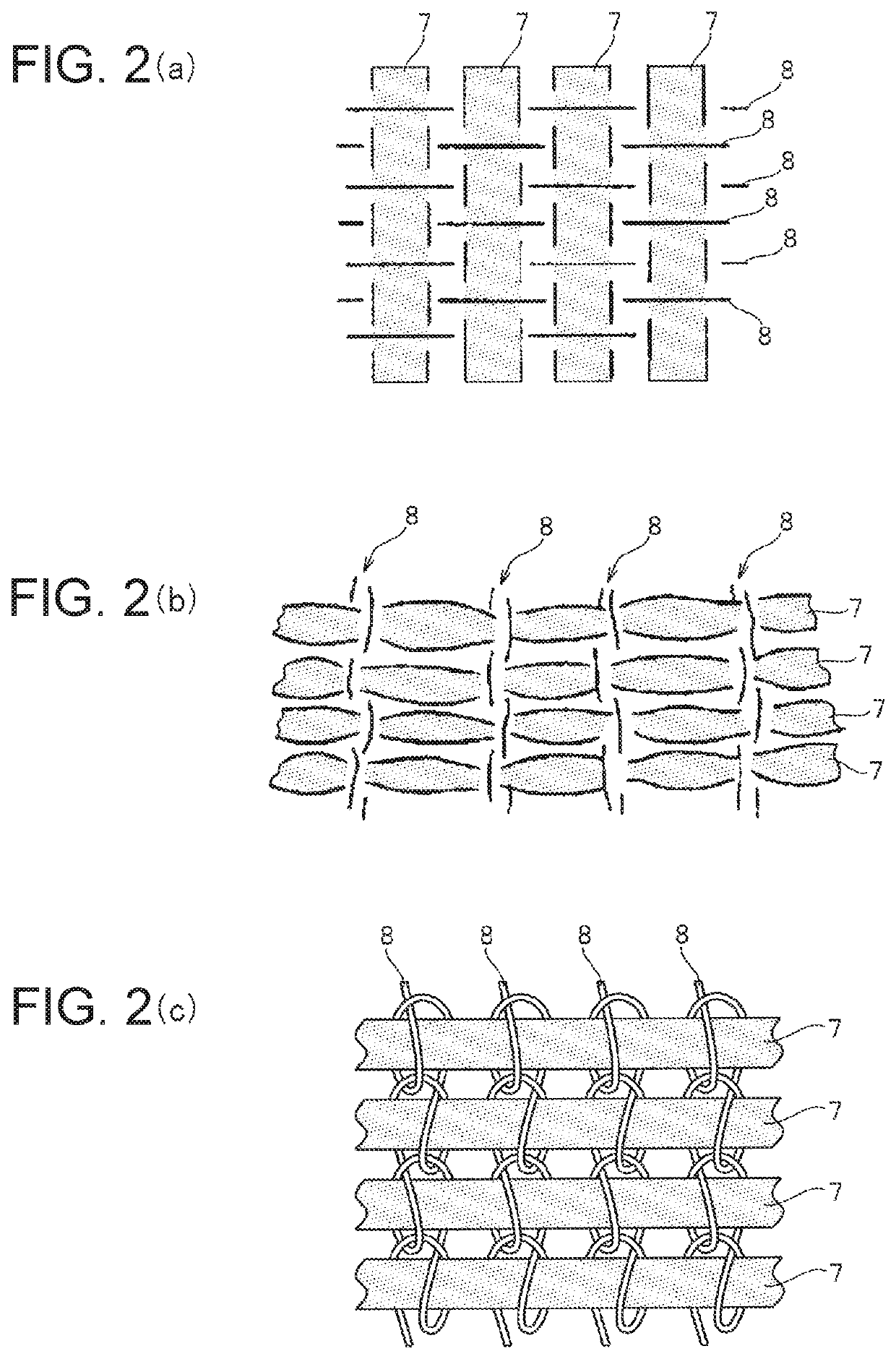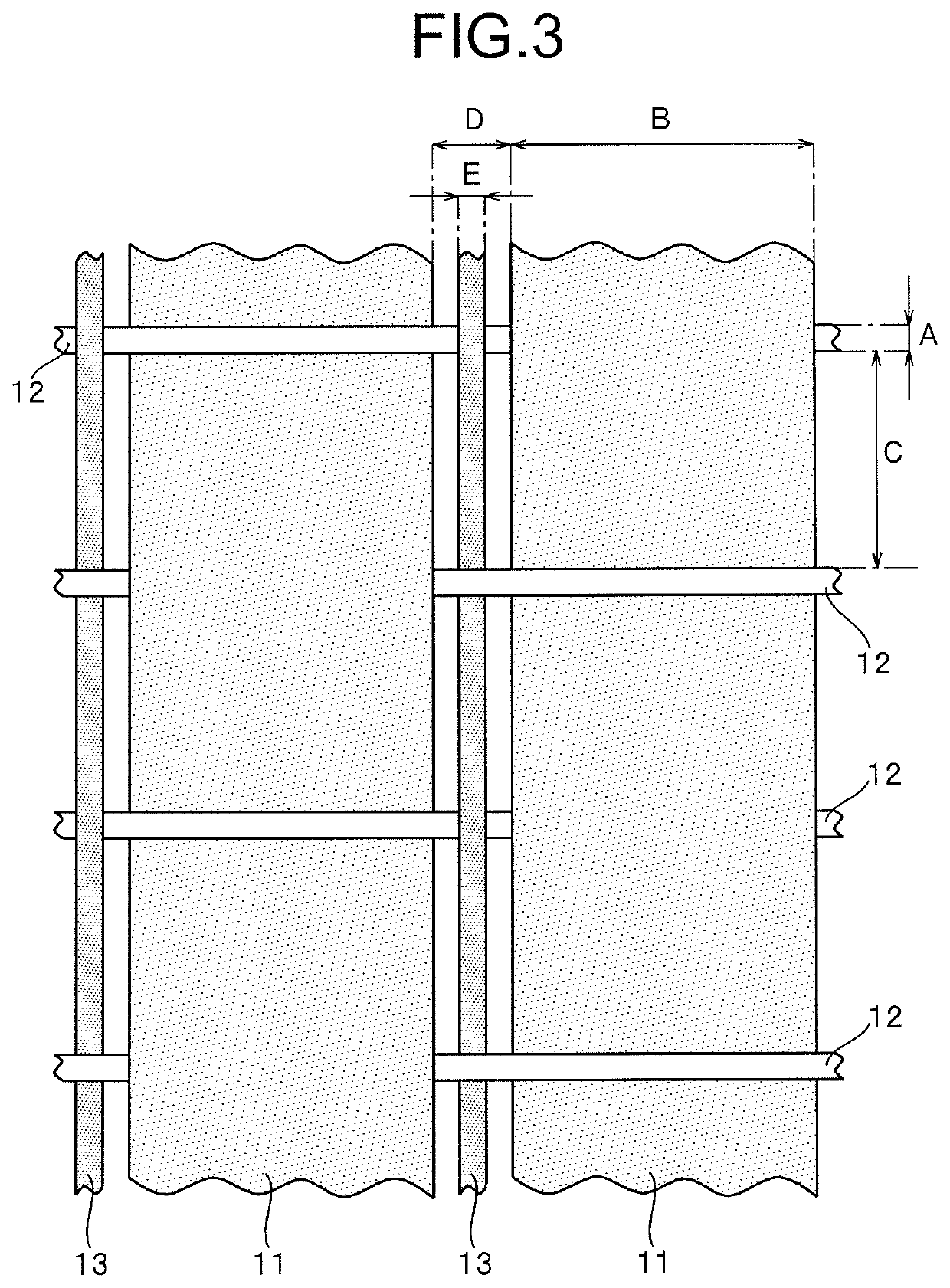Agricultural greenhouse, plant cultivation method using the same, and heat-ray reflecting film structure
a technology of heat-ray reflecting film and greenhouse, which is applied in the direction of protective fabrics, knitting, instruments, etc., can solve the problems of difficult to keep the concentration of carbon dioxide high and the temperature in large facilities not economical to keep, and achieve the effects of reducing energy costs, high reflectance, and high transmittance of visible ligh
- Summary
- Abstract
- Description
- Claims
- Application Information
AI Technical Summary
Benefits of technology
Problems solved by technology
Method used
Image
Examples
examples
[0195]Hereinafter, showing Examples and Comparative Examples, the agricultural greenhouse of the present invention and the plant cultivation method using the agricultural greenhouse is explained in more detail.
[0196]
[0197]A rise of the temperature in the agricultural greenhouse was compared between a case using a heat-ray reflecting type film (hereinafter, “film A”) as a heat-ray shielding film and a case using a heat-ray absorbing type film (hereinafter, “film B”) as a heat-ray shielding film.
[0198]As film A, a film having the following structure and properties was used.
[0199]a biaxially stretched laminated polyester film having a laminated part in which a first layer (PEN resin, 137 layers) and a second layer (PETG resin, 138 layers) are laminated alternately, and in which protection layers (PEN resin, 2 layers) are provided on both surfaces of the laminated part,
[0200]PEN resin: polyethylene-2,6-naphthalate having an intrinsic viscosity (Orthochlorophenol, 35° C.) of 0.62 dl / g,
[0...
examples 1-5
, Comparative Examples 1-2
[0208]The heat-ray shielding means is produced using film A as below and the properties are investigated. The result is shown in Table 2.
[0209]1) the Heat-Ray Shielding Means in Examples 1-3 and Comparative Examples 2
[0210]The narrow band-shaped tape obtained by cutting film A was set on the loom as a warp and a transparent thread was weft inserted, and woven, thereby the heat-ray shielding means as shown in FIG. 2 (a) was produced.
[0211]Specifically, film A was slit-processed and a flat yarn with a width in a short direction of 4.5 mm was produced. Then, the heat-ray shielding means was woven by the loom to make the flat yarn as a warp and a monofilament made of high-density polyethylene resin (fineness: 550 dtex, pulling strength: 29 N / number, draw ratio: 35%) as a weft.
[0212]By adjusting the interval of the flat yarns as a warp, the heat-ray shielding means having an aperture ratio as shown in Table 2 was obtained.
[0213]2) Heat-Ray Shielding Means in Exa...
example 1
Manufacturing Manufacture of the Multi-Layer Laminated Film a
[0222]The multi-layer laminated film A was manufactured by the same method as the one shown in Example 1 in JP2014-228837A.
[0223]Polyethylene-2,6-naphthalate (hereinafter “PEN”) having an intrinsic viscosity (Orthochlorophenol, 35° C.) of 0.62 dl / g as a polyester for the first layer and also for the protection layer, and cyclohexanedimethanol copolymerized polyethylene terephthalate (hereinafter “PETG”) copolymerizing 30 mol % of cyclohexanedimethanol and having an intrinsic viscosity (Orthochlorophenol, 35° C.) of 0.77 dl / g as a polyester for the second layer are respectively prepared.
[0224]The polyester for the first layer and the protection layer was dried at 180° C. for 5 hours and the polyester for the second layer was dried at 60° C. for 12 hours, and thereafter they were supplied to an extruder, then PEN was heated at 300° C. and PETG was heated at 270° C. to be in a molten state. After the polyester for the first ...
PUM
| Property | Measurement | Unit |
|---|---|---|
| reflectance | aaaaa | aaaaa |
| transmittance | aaaaa | aaaaa |
| transmittance | aaaaa | aaaaa |
Abstract
Description
Claims
Application Information
 Login to View More
Login to View More - R&D
- Intellectual Property
- Life Sciences
- Materials
- Tech Scout
- Unparalleled Data Quality
- Higher Quality Content
- 60% Fewer Hallucinations
Browse by: Latest US Patents, China's latest patents, Technical Efficacy Thesaurus, Application Domain, Technology Topic, Popular Technical Reports.
© 2025 PatSnap. All rights reserved.Legal|Privacy policy|Modern Slavery Act Transparency Statement|Sitemap|About US| Contact US: help@patsnap.com



